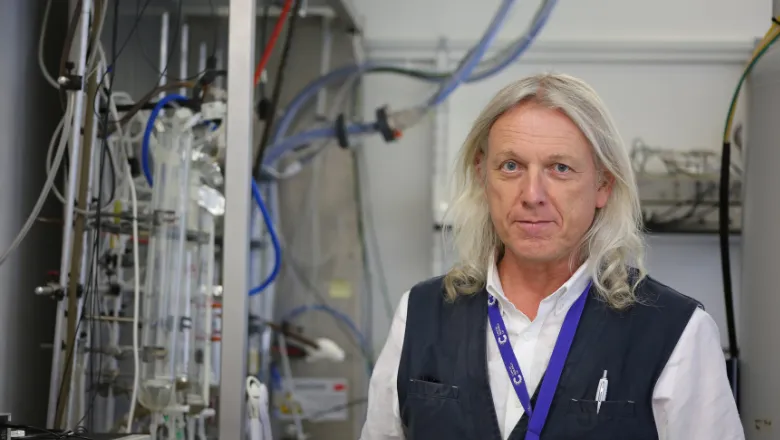We don’t just do innovative chemistry – we apply it in the clinic.
Professor Phil Blower, Professor of Imaging Chemistry & Head of Department of Imaging Chemistry and Biology
24 May 2019
Team awarded £6 million EPSRC Programme Grant
Professor Phil Blower is leading a team that has been awarded over £6 million from the Engineering and Physical Sciences Research Council (EPSRC).

The chemistry-based programme will primarily focus on tackling cancer and cardiovascular disease but will also potentially impact on neurological disease.
To meet the needs of the personalised medicine era, two major challenges must be addressed:
- Transforming patient access to cutting-edge imaging technology by simplifying the production of tracers using ‘smarter’ chemistry.
- Transforming the capability of nuclear medicine by allowing several tracers to be synthesised and used one after the other, instead of just one, as is current practice.
Professor Blower argues these changes will be achieved by using faster, smarter chemistry to produce tracers. This technique can be performed in many more hospitals – saving time and resources and making scans available to more patients.
The faster chemistry will also enable several of these “next generation” molecular imaging tracers to be used in individual patients simultaneously for deeper understanding of disease and hence, more effective therapy.
For over a decade, King’s has been assembling an environment and team fit for the task. The Imaging Chemistry and Biology Department within the School of Biomedical Engineering & Imaging Sciences has ten academic molecular imaging chemists and biologists, alongside physicists and clinicians, plus key external experts feeding in additional novel chemistry and image analysis.
The project – “Next generation molecular imaging and therapy with radionuclides” – has 15 investigators, including 12 from King’s, two from Imperial College and one from Southampton University. It will employ 7 post-doctoral scientists for 5 years.
Clinical translation is the team’s guiding principle. Recent examples include new tracers for imaging prostate and thyroid cancer, hypoxia (lack of oxygen to tissues) and for tracking the journey of therapeutic stem cells in the body. With a pipeline of projects approaching clinical translation, the programme will create the opportunity for even more life-changing research.
